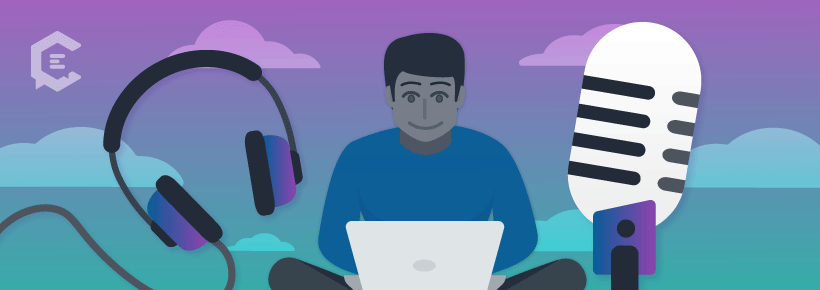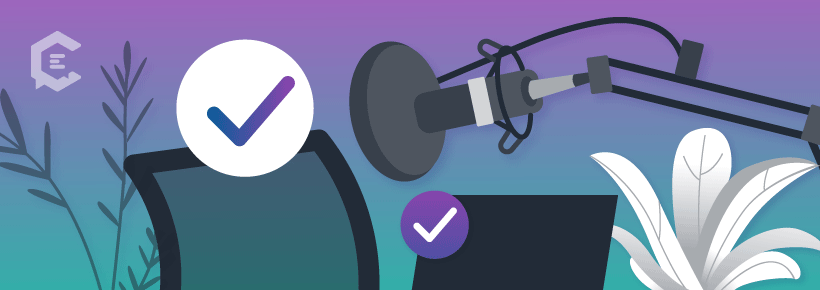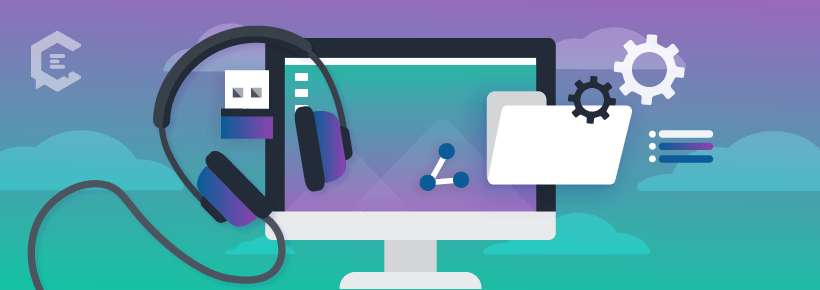#GrowthGoals: One content creator’s forage into the podcasting space. A blog series exploring the well-intentioned attempt of a content creative to learn about a new trade.
My tendency as a beginner is worrying about getting it right.
When it comes to something related to audio or video recording, I also tend to overwhelm myself (and procrastinate) with researching and finding the “right equipment.” The end result can be decision paralysis and inaction, so to avoid that I wanted to keep it simple.
The brief and very light podcast recording tips below are intended to keep my beginner’s mind filled with a sense of play and experimentation.
Podcast recording tips for beginners:
The resources I’ve listed come from materials geared toward radio storytelling curriculum developed for teachers and their students and/or young adults.
I wanted to avoid the rabbit hole of falling into the abyss of sound tech and all its nuances. Truly, I just wanted to know the basics of building a sound library, preparing for interviews, and getting it “on tape.”
To be successful, build a steady audience, and earn a solid podcast salary, you’ll need to invest in the following equipment:
- A recording device (you can also use a smartphone)
- A microphone
- A good set of headphones
- A computer for backing up your audio right away
- An external hard drive or cloud storage account for a second line of backups
- Sound editing software (Audacity is a free open-source, cross-platform audio software)
- Extra memory cards and batteries; power cords and sources for back-up juice
Radio Dairies DIY Handbook and Radio Rookies offered simple tips for getting organized. These are some tips I gathered from multiple sources and curated for you.
Pre-recording:
- Test your equipment and know your gear.
- Wearing your headphones, listen to your test recording to make sure your levels are good and free of unwanted screechy sounds, hums, buzzes or ruffling from your hands handling the mic.
- Consider relocating your interview if distracting noises persist.
- Research your subject and prepare your questions so they are phrased in a way to elicit your interviewee to tell their story.
While recording:
- Hold the mic about 4-6 inches from your interviewee’s mouth, just under the chin at a slight angle and not so close to hear the “Popping-P” sound.
- Record sounds, lots of them. Action sounds: (The sound of sizzling bacon if your interviewee is cooking); Picture sounds: (The sound of a bus pulling away if you are telling the story of a journey). These sounds, whether scripted or not, will serve you in the final edit to indicate transitions and emphasis.
- Record at least 2 minutes of “silence” in every location that you record. This will be ambient sound to help in your edits.
Post-recording:
- Upload your audio to a back-up system, external drive and label it with a name, location and recorded time lengths.
- Make notes of time codes when your subject said something interesting that stood out to you.
- Return to your story planning strategy and evaluate how each recording is helping you to shape your story
- In the editing process, you will listen to all your recordings again and again, breaking your story into multiple scenes. For example, a long audio reporting piece that lasts 10-12 minutes might contain 5-7 scenes.
- Consider other aspects of sound that you may want to include, such as music, to help with scene changes, transitions, slight turns, changes in location, shifts in time or to break up an interviewee’s long quote.
There are loads of podcasts about making podcasts available these days. Some are more technical than others, but one I really like is called ‘Howsound’ by Rob Rosenthal. In his two-part episode “Scoring Stories”, Rosenthal takes examples from audio journalism, breaks them into teaching sound byte moments, and delightfully shares his knowledge and insights in an easy to understand manner.






